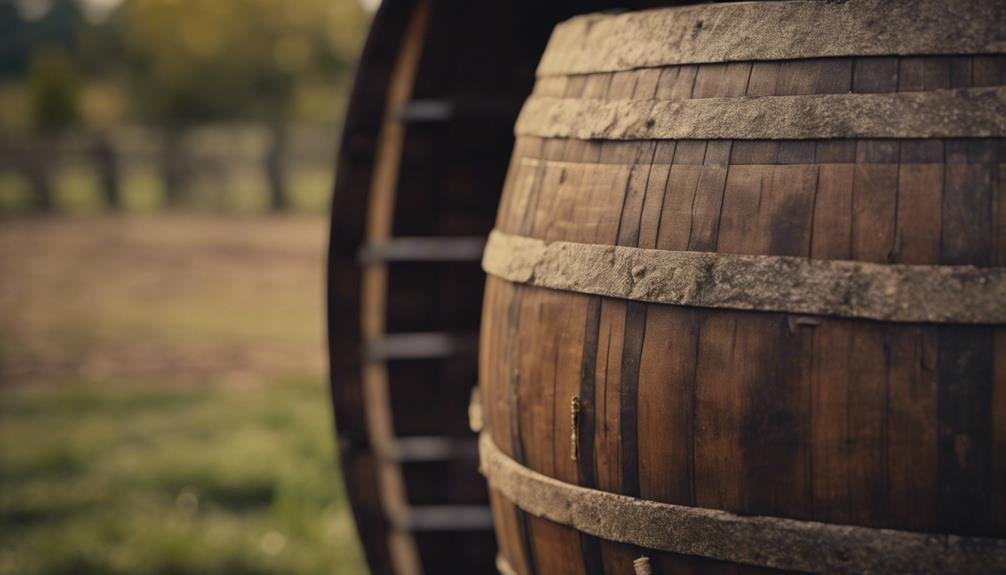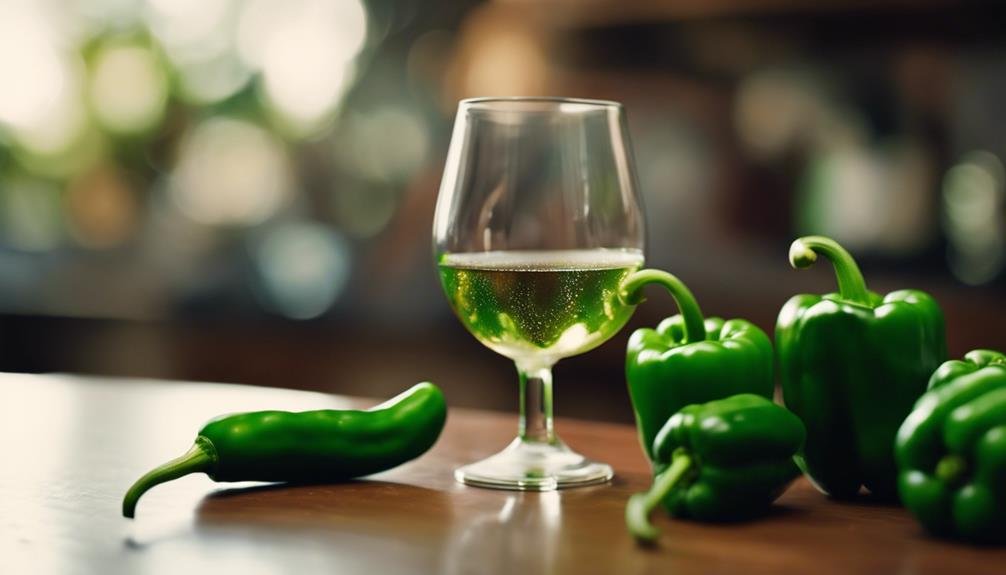Discover the unexpected pleasures of imperfections in wine. Embrace oxidation for enhanced umami notes and diverse flavors in Vin Jaune and Sherry. Heat can create rich caramel and smoky undertones, elevating wine complexity. Brettanomyces adds earthy, spicy layers, enriching the wine experience with depth. Volatile acidity balances tartness, revitalizing the profile but excess can lead to off-putting aromas. Pyrazine compounds introduce herbaceous nuances like bell pepper, shaping wines like Sauvignon Blanc uniquely. Uncover the hidden delights within wine flaws, where imperfections reveal surprising joys in the intricate world of flavors and aromas.
Benefits of Oxidation in Wine
Indisputably, oxidation in wine presents an intriguing avenue where exposure to oxygen can yield unexpected umami flavors, particularly enhancing the character of select wines like Vin Jaune and Sherry. Umami richness, a savory taste sensation, is a sought-after quality in wines crafted through oxidative winemaking processes. This method intentionally exposes the wine to oxygen during production, leading to a spectrum of flavors beyond traditional fruity or floral notes.
Vin Jaune, a renowned oxidative wine from the Jura region of France, showcases nutty, spicy, and umami-rich characteristics due to controlled oxidation. Similarly, Sherry, a fortified wine from Spain, gains complexity and depth through oxidative aging, offering a unique blend of umami flavors that intrigue and delight the discerning palate.
Embracing Heat for Unique Flavors
Delving deeper into the world of winemaking, the use of heat in the process offers a chance to develop unique and alluring flavors within specific wines. Exploring caramelization through intentional heat exposure can result in rich, sweet notes reminiscent of toffee and butterscotch.
Embracing smokiness, another product of controlled heating, can add complexity and depth to the wine, creating a delightful sensory experience for enthusiasts. The process of heat application can transform the wine, giving it a distinct character that sets it apart from traditionally made counterparts.
Complexity of Brettanomyces in Wines

Brettanomyces, a yeast commonly found in winemaking, contributes complexity to wines when managed appropriately. Brettanomyces complexity enhances wine by adding earthy, spicy, and leathery notes, enriching the sensory exploration for wine enthusiasts.
When present in controlled amounts, brettanomyces can introduce a layer of depth and intrigue to the wine, enticing drinkers with its unique characteristics. The interplay between brettanomyces and other flavor components in wine offers a fascinating journey of discovery, inviting individuals to investigate and appreciate the diverse nuances it brings.
Tartness and Complexity of Volatile Acidity
Exploring the interplay of volatile acidity in wines reveals a vital balance between tartness and complexity, showcasing the intricate layers of flavors that this characteristic can impart.
When volatile acidity is in harmony, it contributes to the acidity balance of the wine, elevating its profile and adding a revitalizing tartness that enhances the overall drinking experience. Additionally, the presence of volatile acidity can lead to flavor enhancement, introducing subtle nuances that bring depth and complexity to the wine.
However, it is essential to note that excessive volatile acidity can result in off-putting aromas reminiscent of paint thinner, underscoring the delicate nature of achieving the perfect balance to fully appreciate the unique qualities this flaw can offer.
Desirable Herbaceous Flavors of Pyrazine

What distinctive characteristics do pyrazine compounds bring to the flavor profile of certain grape varieties like Sauvignon Blanc?
Pyrazine profiles introduce herbaceous nuances to wines, contributing to their unique sensory experience. These compounds are responsible for imparting green aromas such as bell pepper, grass, or herbal notes, enhancing the complexity and depth of the wine.
When present in moderation, pyrazines can add an invigorating and vibrant quality to the overall flavor profile, creating a harmonious balance with other aromatic components.
Winemakers often aim to showcase these herbaceous nuances in wines like Sauvignon Blanc, where pyrazines play a defining role in shaping the wine's character. Understanding and appreciating the subtle influence of pyrazine compounds can lead to a greater enjoyment and exploration of wines with these distinctive flavor profiles.
Frequently Asked Questions
Can Oxidation Ever Enhance the Flavor of a Wine?
Oxidation benefits wine by enhancing flavor development. Controlled exposure to oxygen can create umami notes, particularly in oxidative winemaking styles like Vin Jaune and Sherry. When managed carefully, oxidation can contribute positively to a wine's complexity and character.
How Can Intentional Heat Exposure Benefit Certain Wines?
Intentional aging through controlled heat exposure can benefit wines by imparting complex flavors. This technique enhances depth and richness, creating unique profiles. Understanding the art of intentional heat manipulation is crucial to fully realizing the potential of certain wines.
Is Brettanomyces Always Considered a Flaw in Wines?
In the world of winemaking, brettanomyces is not universally viewed as a flaw. When managed carefully, brettanomyces can offer unique complexities and underappreciated nuances that enhance certain wines, showcasing the subjective nature of wine appreciation.
What Is the Difference Between Acceptable and Excessive Volatile Acidity?
Volatile acidity in wine can be desirable in small amounts, adding tartness and complexity. However, exceeding sensory thresholds can lead to off-putting aromas, like paint thinner. Differentiating between acceptable levels that enhance wine and excessive levels that indicate flaws is essential.
Which Grape Varieties Are Known for Exhibiting Pyrazine Flavors?
Sauvignon Blanc and Cabernet Franc are grape varieties known for exhibiting pyrazine flavors, contributing herbaceous notes like bell pepper and grass. Understanding these wine faults enhances awareness of distinctive wine aromas, enriching tasting experiences for enthusiasts.
Conclusion
In the intricate world of winemaking, imperfections often lead to unexpected delights, showcasing the beauty of embracing flaws in wine.
The interplay between oxidation, heat exposure, Brettanomyces, volatile acidity, and pyrazine adds depth and complexity to tasting experiences.
By exploring these surprising joys in imperfections, wine enthusiasts can broaden their sensory horizons and savor the unique nuances present in each bottle.
The allure of embracing enjoyable flaws in wine is like discovering a hidden treasure in every sip.
